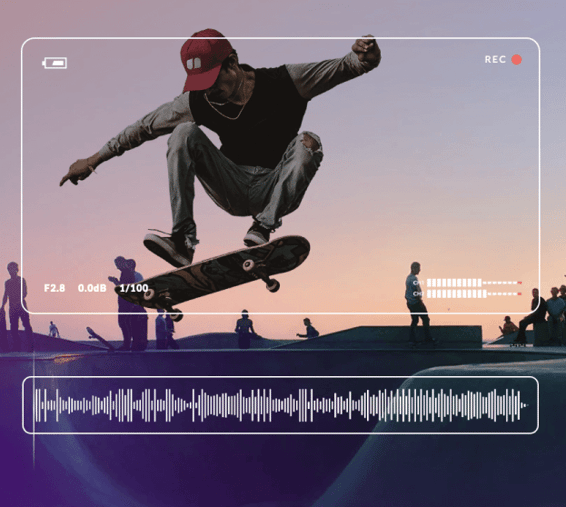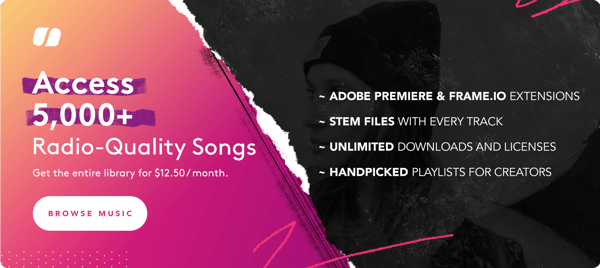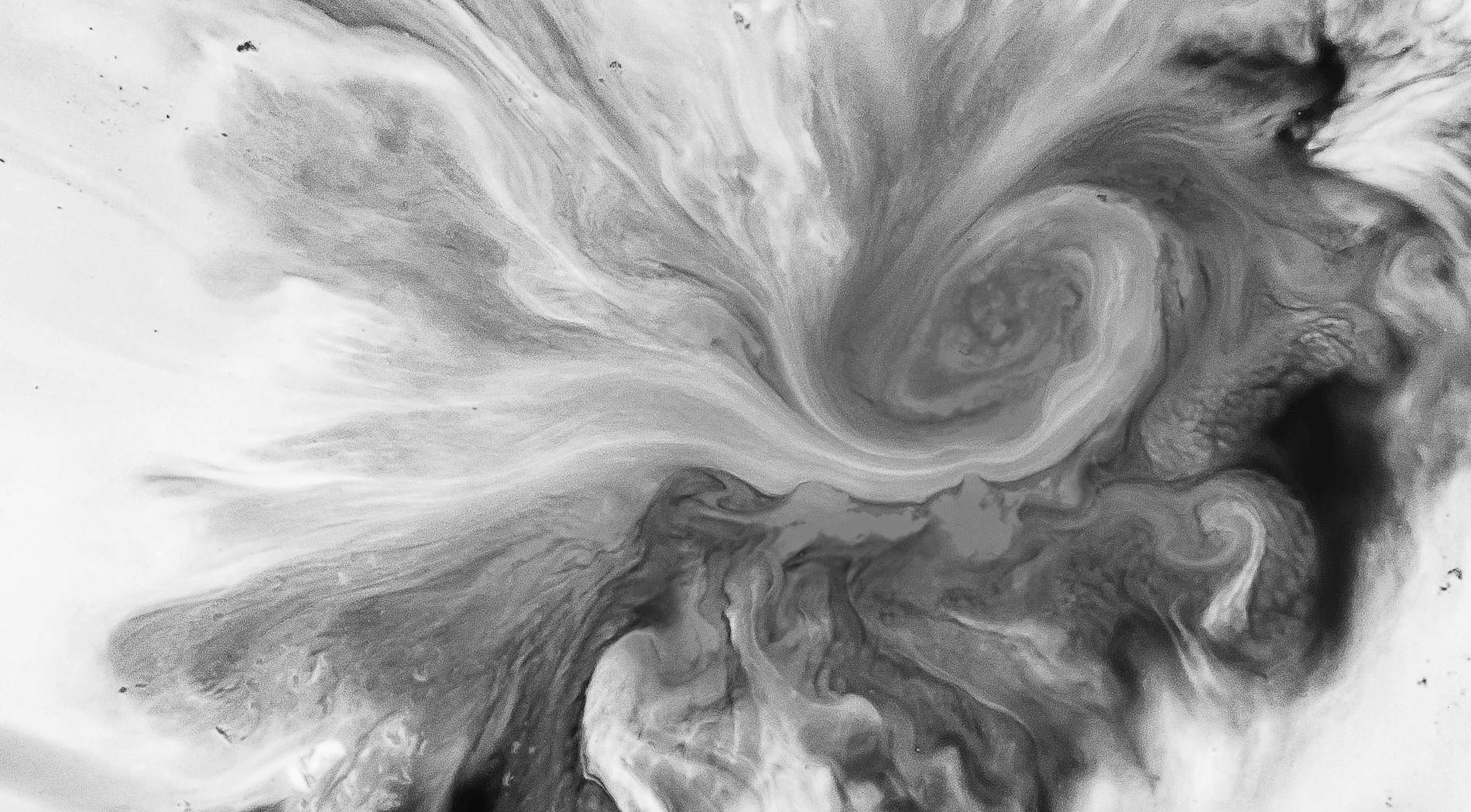Welcome to Outstanding
Royalty Free Pop Music






Listen To Our Best Royalty Free Pop Music
We know the right song can make or break your project. That’s why every track in our library is vetted by award-winning producers. Hear for yourself. We've curated a playlist with our best royalty free pop music.
Looking for something different?
We got you. From classical to hip hop to indie, our audio library contains thousands of outstanding tracks. Use one of our 13 filters or check out other curated playlists to find what you need in minutes.
BROWSE THE FULL CATALOG
Dead Simple Licensing
Never worry about licensing again. With Soundstripe, your membership covers the cost for every song license. Just find the right track, download the file, and get a custom license. That’s it. No channel or media-specific fees, no recurring royalties, ever. Here’s more good news: you have unlimited licenses. Go ahead, download as many songs as you want.
Get The Most Out Of Royalty Free Pop Music In Any Type Of Video
These days it feels like any song could be rolled into pop music. After all, “pop” is just short for “popular,” and anything that’s currently trending on the radio is clearly popular.
…right?
That’s certainly the assumption we all make. But the truth is that pop music has its own defining features and a unique history as a standalone genre. (Or a “solo artist,” if you will.)
How To Define Pop Music
Pop music brings the toe-tapping rhythm and compulsive sing-alongs that define car trips and casual parties. In other words, it might be the easiest music choice if you want to bring that sort of contagious energy into a creative project.
And royalty free pop music can bring any video to life, whether it’s a corporate training video or a short film trailer. But more on that later.
First, let’s address the idea that “pop music” and “popular music” mean the same thing.
Originally, pop music was a defined genre, something that people expected at a party or dance. Back in the 1950s and ‘60s, “pop” functioned as a genre bucket that included the earliest rock and roll music, as well as upbeat blues and jazz.
Pop music didn’t find its own identity until the 70s when rock became a dominant genre and forced a more defined split. After that, “pop music” became associated with commercial music.
Another key aspect of pop music is the rise of music production. Live music is often associated (at least unconsciously) with rock or EDM, something where the loudness and energy add to the experience rather than detract from it.
While rock and roll settled into garages and hot rods around the world, trending radio music rallied together around the concept of “pop music” once again.
Critics and record labels determined that mainstream music would be enjoyable for any audience, regardless of personal preference, and pushed all those tagalongs out of the conversation.
That helped establish a baseline for what we can expect to hear on most radio stations. While it’s still a little difficult to pin any expert down on things like BPM or specific instrumentation, everyone seems to agree on a few primary traits that span everything from 17th century modes to modern guitar riffs.
Characteristics Of Pop Music
For now, let’s focus on the key traits or characteristics that can define a pop song (and not just a song that’s currently popular).
One of the easiest things to pinpoint is the “hook” of a song. These are the brief moments that stick in your head for hours, days, or weeks at a time. It might be a guitar riff, a chord progression, or even some sort of New Age synth sound.
What it is doesn’t matter, so long as it’s catchy.
“Catchy” and “repeatable” are the two key components of any good pop song. Studies show that “repetition enchants the brain” and that certainly gives credibility to why some songs become so irresistible for listeners. (Looking at you, “Baby Shark.”)
Songwriters needed a way to make the song stick with the listener, particularly because pop music began as this kind of neutral zone where songs from different genres could mingle. The only way to stand out was with an unforgettable hook that would turn the song into an earworm you can’t get out of your head.
Pop music also doesn’t rely on a standardized tempo. Sure, it’s common for these songs to be a little upbeat — that only adds to the catchiness, after all. But another common characteristic is a reliable chord progression, which you can think of as the melody you hum without realizing it.
Simple and consistent chord progressions have been an influential element of popular music dating all the way back to Pachelbel’s “Canon in D.” This songwriting trick is why songs can influence our mood. In fact, scientists have proven that certain keys and chord progressions affect how humans feel during and after hearing them.
That’s why when you think of songs that stay relevant for decades or even centuries, they’ll almost all rely on tried-and-true formulas for chord progression.
Using Royalty Free Pop Music In Video
Good music is a pretty valuable tool for filmmakers and any other content creators. It’s a way to control the emotional experience of your viewers, steering them toward a particular mood that adds depth and context to the visuals on screen.
Pop music has a few clear benefits as background music for video. As mentioned earlier, this genre’s tendency toward upbeat moods and steady tempos provide an easy way to raise the energy levels for a corporate video, vlog, or short film (without needing to get all heavy-handed with rock guitars and EDM drones).
But chances are good that you won’t be able to get the exact song you want for your video. Dropping an .mp3 of The Weeknd’s “Blinding Lights” into your project timeline could feel like the perfect match.
In a few months, however, it’ll start to feel like an expensive headache. Because that’s when you’ll get slapped with a DMCA strike due to copyright infringement.
Even going the “perfectly 100% legal route” can be difficult. To use The Weeknd’s hit track in a project, you’ll have to convince every single copyright owner to agree to license the song. And that can lead to thousands of dollars of fees, not to mention weeks of negotiating. Most creators just don’t have that kind of budget or time frame to put into a single project.

Thankfully, you can still find great songs without having to break any laws or take out a second mortgage. Royalty free pop music can capture those same vibes for your video at a fraction of the cost, making it an ideal tool for content creators.
For example, Soundstripe provides thousands of radio-quality songs in one convenient subscription. That means unlimited access to our entire library (yes, lots of radio-quality pop music).
More importantly, it means you can download and use any Soundstripe song you want without ever worrying about copyright claims against your videos. So you can sleep easier knowing that you’ve got all the pop songs you need to create the perfect mood for your next project.


Have questions? Give us a call
855.224.0847
Soundstripe - Unlimited Music for Video
© 2017-2020 A Product of Soundstripe, Inc
Nashville TN



